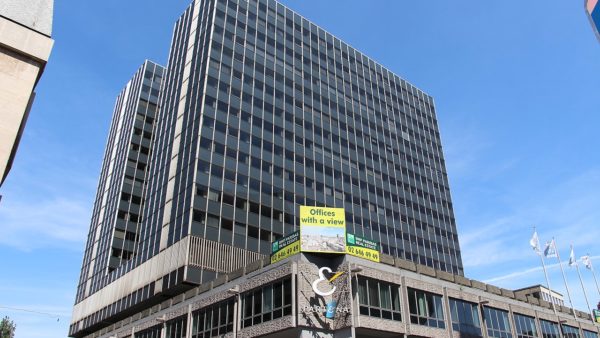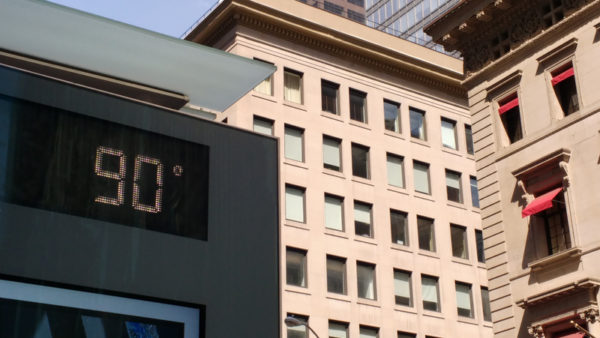In what is being called a “Wright Brothers moment”, the busy Port of Los Angeles in California has embarked on a $27m effort to prove that the energy-hungry business of handling cargo can be powered by the sun.
The project will make one terminal in the sprawling port clean by using electric vehicles and cargo handling equipment, powered by a 1-megawatt rooftop solar installation, backed by a battery storage system with 2.6 megawatt-hours (MWh) of capacity.
Called the Green Omni Terminal Demonstration Project, the port hopes to demonstrate that a clean-energy microgrid can allow terminal operations to continue in the event of a widespread power outage, and operate without polluting the atmosphere.
“This is a Wright Brothers moment,” said Jeffrey Burgin, senior vice president of Pasha Stevedoring and Terminals, a cargo handling company collaborating on the pilot, at the scheme’s launch in May.
“We’re going to be the proving ground to change the paradigm of how large industrial facilities can run on clean energy. We’re confident we can show this is absolutely attainable.”
Last week the US engineering and design consultant Burns & McDonnell won the contract to provide design-build engineering and overall project management services for the scheme, which it said could “revolutionize marine terminal operations”.
The solar power system will be the centrepiece of the project, Burns & McDonnell said in a press notice. It will operate in parallel with the Los Angeles area grid through sophisticated energy management system that will enable the terminal to keep going as a microgrid for a limited time in a power outage.
Engineering is set to begin this month, with construction beginning in October and complete by mid-2017.
The solar plant will power a new fleet of electric machinery: battery-powered drayage trucks, yard tractors, two 21-ton forklifts, and a top handler for loading and unloading goods.
But the biggest polluter at ports are the ships themselves. If they cannot plug into a shore-based power system while berthed, they must keep engines running, which spews greenhouse gases.
To combat this, the Green Omni Terminal will have a mobile marine exhaust treatment system, which can capture more than 90% of emissions form stacks.
All these improvements are expected to cut carbon dioxide emissions by 3,230 tons per year, diesel particulate matter by 0.6 tons per year, nitrogen oxides by 26 tons per year and reactive organic gases by 1.4 tons per year.
According to the Port of Los Angeles, the improvements would be equivalent to removing 14,100 vehicles from the roadways in Southern California.
Burns & McDonnell has engineered microgrid projects incorporating solar and emissions technology before, but the firm says this scheme will “set a whole new standard”.
“We expect a number of other facilities will be launching similar zero-emissions projects based on the results from the Green Omni Terminal,” said Dr. Matt Wartian, project manager for the scheme.
He added that the model could be applied to the 26 other terminals at the Port of Los Angeles, and to terminals around the world.
“The Port of Los Angeles is the busiest gateway for commerce in America, so what better place to demonstrate an all-new approach to eliminating greenhouse gases and other harmful emissions,” said Renita Mollman, vice president and general manager of Burns & McDonnell’s California region.
The project is funded by a $14.5m grant from the California Air Resources Board, while Pasha Stevedoring and Terminals has committed $11.4m in cash and in-kind participation. Other project partners are also contributing.
Image: Aerial view of the sprawling Port of Los Angeles, with Long Beach in the background (NickCPrior/Wikimedia Commons)
Comments
Comments are closed.











It is exciting to think what can be quickly achieved with current technology given the opportunity. Seeing the smog in the photo, it looks like the other terminals could do with a solar refurbishment a well. Looking forward to hearing about similar roll out to terminals around the globe in similar timeframes.